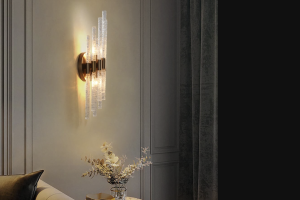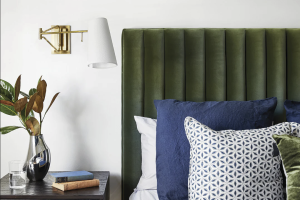The metal tube chandelier has emerged as a striking symbol of contemporary design, merging functionality with artistic expression. Characterized by its sleek lines and geometric forms, this lighting fixture often features an array of metal tubes that can vary in size, shape, and finish. The aesthetic appeal of these chandeliers lies in their ability to evoke a sense of industrial chic while providing ample illumination.
As more homeowners and designers gravitate towards minimalist and modern styles, the metal tube chandelier has become a favored choice for those looking to make a bold statement in their spaces. Beyond mere aesthetics, the metal tube chandelier serves a practical purpose, illuminating areas with a unique flair. Its versatility allows it to fit seamlessly into various design schemes, from urban lofts to rustic homes.
The interplay of light and shadow created by the arrangement of metal tubes can transform a room, adding depth and character. As we delve deeper into the history, design, and impact of the metal tube chandelier, it becomes evident that this fixture is not just a source of light but a pivotal element in the narrative of modern interior design.
History and Evolution of Industrial Ambiance
The concept of industrial ambiance can be traced back to the late 19th and early 20th centuries when factories and warehouses began to dominate urban landscapes. This era marked a significant shift in architectural styles, as utilitarian structures were often left exposed, showcasing raw materials like steel, concrete, and brick. The aesthetic that emerged from this period celebrated functionality over ornamentation, leading to the rise of what we now recognize as industrial design.
The metal tube chandelier is a direct descendant of this movement, embodying the principles of simplicity and practicality. As the industrial revolution progressed, designers began to repurpose materials from these factories into home decor. The use of metal in lighting fixtures became increasingly popular, as it offered durability and a modern edge.
By the mid-20th century, the industrial style had evolved further, incorporating elements from mid-century modernism and minimalism. Designers like George Nelson and Isamu Noguchi experimented with form and function, paving the way for contemporary interpretations of industrial lighting. The metal tube chandelier stands as a testament to this evolution, merging historical influences with modern sensibilities to create a timeless piece that resonates with today’s design ethos.
Design and Construction of Metal Tube Chandelier
The design of a metal tube chandelier is often characterized by its geometric precision and innovative use of materials. Typically constructed from metals such as brass, steel, or aluminum, these chandeliers can be finished in various ways—polished, matte, or even oxidized—to achieve different visual effects. The arrangement of the tubes can vary widely; some designs feature parallel lines that create a linear effect, while others may adopt a more chaotic or asymmetrical layout that draws the eye in multiple directions.
Construction techniques for metal tube chandeliers have also advanced significantly over the years. Modern manufacturing processes allow for intricate designs that were once impossible to achieve by hand. Techniques such as laser cutting and welding enable designers to create complex shapes with precision.
Additionally, advancements in LED technology have transformed how these fixtures are illuminated. Many contemporary metal tube chandeliers now incorporate energy-efficient LED bulbs that not only reduce energy consumption but also offer a range of color temperatures to suit different moods and settings. This blend of traditional craftsmanship with modern technology results in lighting fixtures that are both functional and artistically compelling.
The Role of Metal Tube Chandelier in Interior Design
In the realm of interior design, the metal tube chandelier plays a multifaceted role that extends beyond mere illumination. It acts as a focal point within a room, drawing attention and setting the tone for the overall aesthetic. In spaces characterized by high ceilings or open floor plans, these chandeliers can create a dramatic visual impact, enhancing the architectural features of the environment.
Their sculptural quality allows them to function as art pieces in their own right, contributing to the narrative of the space. Moreover, the versatility of metal tube chandeliers makes them suitable for various design styles. In an industrial loft, they can complement exposed brick walls and concrete floors, reinforcing the raw aesthetic.
Conversely, in a more traditional setting, they can add an unexpected twist that modernizes the space without overwhelming it. Designers often use these fixtures to bridge different styles within a home, creating harmony between contemporary elements and classic furnishings. This adaptability underscores the importance of the metal tube chandelier as not just a lighting solution but as an integral component of cohesive interior design.
How to Incorporate Metal Tube Chandelier in Different Spaces
Incorporating a metal tube chandelier into various spaces requires thoughtful consideration of both scale and style. In dining areas, for instance, a large metal tube chandelier can serve as an eye-catching centerpiece above the table. Its height should be adjusted to ensure that it provides adequate light without obstructing views across the table.
Choosing a design that complements the dining room’s color palette and furniture style can enhance the overall dining experience. In living rooms, metal tube chandeliers can be used to create an inviting atmosphere. A statement piece above a coffee table or seating area can anchor the space while providing ambient lighting.
For smaller rooms or spaces with lower ceilings, opting for a more compact design or one with adjustable height can ensure that the chandelier does not overwhelm the area. Additionally, layering lighting is essential; combining the chandelier with floor lamps or wall sconces can create a warm and inviting ambiance that encourages relaxation and conversation. In bedrooms, metal tube chandeliers can add an element of sophistication while maintaining a sense of intimacy.
A smaller fixture above a bedside table or centered over the bed can provide soft lighting conducive to restful evenings. When selecting a chandelier for this space, consider how its finish interacts with other materials in the room—such as wood or textiles—to create a harmonious environment.
Maintenance and Care of Metal Tube Chandelier
Maintaining a metal tube chandelier is essential for preserving its beauty and functionality over time. Regular cleaning is crucial to prevent dust accumulation and tarnishing of the metal finish. A soft microfiber cloth is often sufficient for routine dusting; however, for deeper cleaning, it may be necessary to use a gentle soap solution or specialized metal cleaner depending on the material used in construction.
Care should be taken to avoid abrasive cleaners that could scratch or damage the surface. In addition to cleaning, periodic inspections are important to ensure that all components are functioning correctly. Checking for loose connections or damaged wiring can prevent potential hazards and ensure optimal performance.
If the chandelier uses LED bulbs, replacing them when they dim or burn out is essential for maintaining consistent lighting levels. For more complex maintenance tasks—such as rewiring or replacing parts—consulting with a professional electrician is advisable to ensure safety and compliance with local regulations.
The Impact of Metal Tube Chandelier on the Environment
The environmental impact of lighting fixtures like metal tube chandeliers is an increasingly important consideration in today’s design landscape. The choice of materials plays a significant role; opting for sustainably sourced metals can reduce ecological footprints associated with mining and manufacturing processes. Additionally, many modern chandeliers are designed with energy efficiency in mind, utilizing LED technology that consumes significantly less energy than traditional incandescent bulbs.
Moreover, the longevity of metal tube chandeliers contributes positively to environmental sustainability. High-quality materials and construction techniques ensure that these fixtures can last for many years without needing replacement. This durability reduces waste associated with frequently discarded lighting fixtures and promotes a more sustainable approach to interior design.
As consumers become more environmentally conscious, selecting products that align with sustainable practices will likely influence future trends in lighting design.
The Future of Industrial Ambiance in Interior Design
As we look toward the future of industrial ambiance in interior design, it is clear that elements like the metal tube chandelier will continue to play an essential role in shaping contemporary spaces. With their unique blend of artistry and functionality, these fixtures resonate with modern sensibilities while honoring historical influences. As designers experiment with new materials and technologies, we can expect innovative interpretations of industrial lighting that push boundaries while remaining rooted in tradition.
The ongoing evolution of interior design will likely see an increased emphasis on sustainability and energy efficiency, further enhancing the appeal of metal tube chandeliers as eco-friendly choices for homeowners and designers alike. As we embrace these changes, it becomes evident that the metal tube chandelier is not merely a trend but rather an enduring symbol of creativity and innovation within the realm of interior design—a fixture that will continue to illuminate our spaces for years to come.



